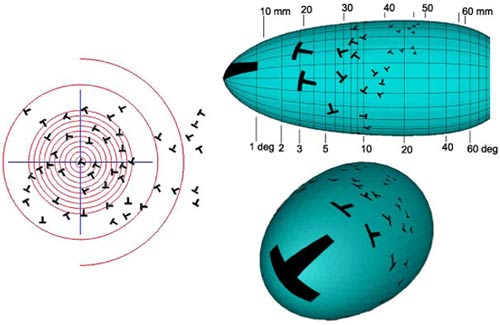Reading shorthand is just an exaggeration
When reading, your eyes act like a floodlight on the road. The structure of the eye only allows them to focus on a small area, so the term shorthand is just bullshit, a study has just stated.
Although you have the illusion that you see the whole page, you actually see only a small cluster of words at the point where the eye is focused. Only 8 to 10 words fall into this small window, called the visual aperture. The remaining characters are only blurry, says Gordon Legge, a visual researcher at the University of Minnesota.
So how do people read a long book like War and Peace ?
"The reader made a series of eye movements while surfing through the whole page," Legge explained. "On average, a person moves their eyes 4 times per second, earning 4-5 words in a second and 250 to 300 words in a minute. That's an estimate at normal reading speeds."
Due to the limited nature of the visual aperture, reading more than 300 words per minute is almost impossible.
"Reading shorthand is a misunderstanding," Legge said. "There is no magic here. It's just that you are sowing this tiny visual island quickly across the page."
When the observation conditions get worse, the visual aperture will be smaller. For example, people with macular degeneration will read more slowly than those with healthy eyes, even if they are wearing amplified glasses.
In the laboratory, Legge and colleagues examined how differences (such as character size or contrast) affect visual aperture and speed of reading. As a result, reading small print, with poor contrast or being printed at unusual distances also leads to slow reading.

Three-dimensional model of the visual cortex (Photo: LiveScience)
T. An
- The device supports reading on the Run-n-Read move
- Want to live longer, read more books
- Reading habits of other poor people?
- Teach your child to learn better with reading pen
- Reading e-books takes longer than reading printed books
- Benefits of reading many times
- Others 'reading thoughts' are used by the FBI and CIA
- Automatic oral reading machine recognizes languages in the world
- The antioxidants, real and unreal?
- Finger reading
- Methods of 'brainstorming' by training reading skills
- Gentle method to help you become a
 'Fine laughs' - Scary and painful torture in ancient times
'Fine laughs' - Scary and painful torture in ancient times The sequence of numbers 142857 of the Egyptian pyramids is known as the strangest number in the world - Why?
The sequence of numbers 142857 of the Egyptian pyramids is known as the strangest number in the world - Why? History of the iron
History of the iron What is alum?
What is alum?